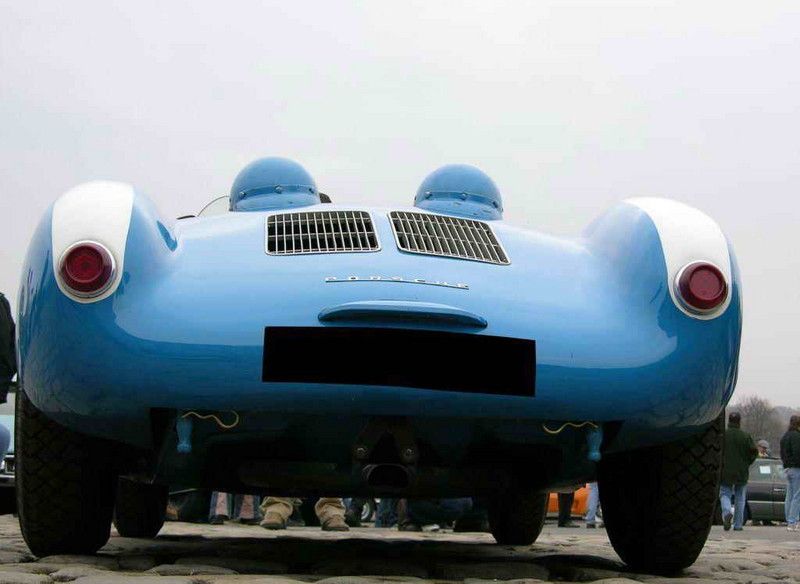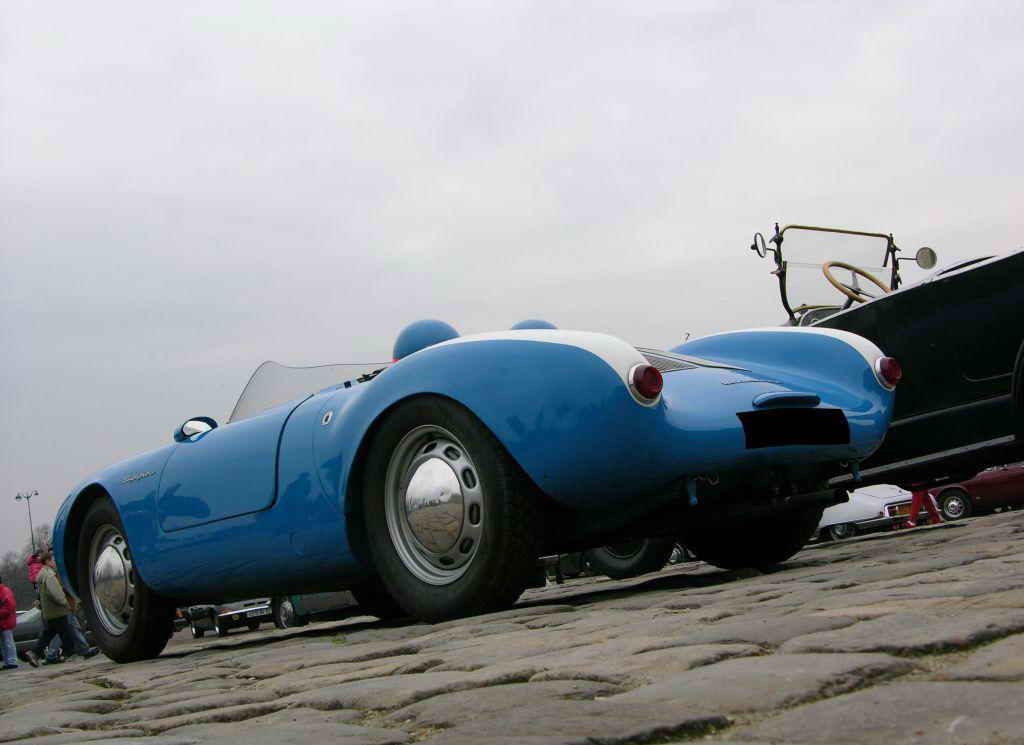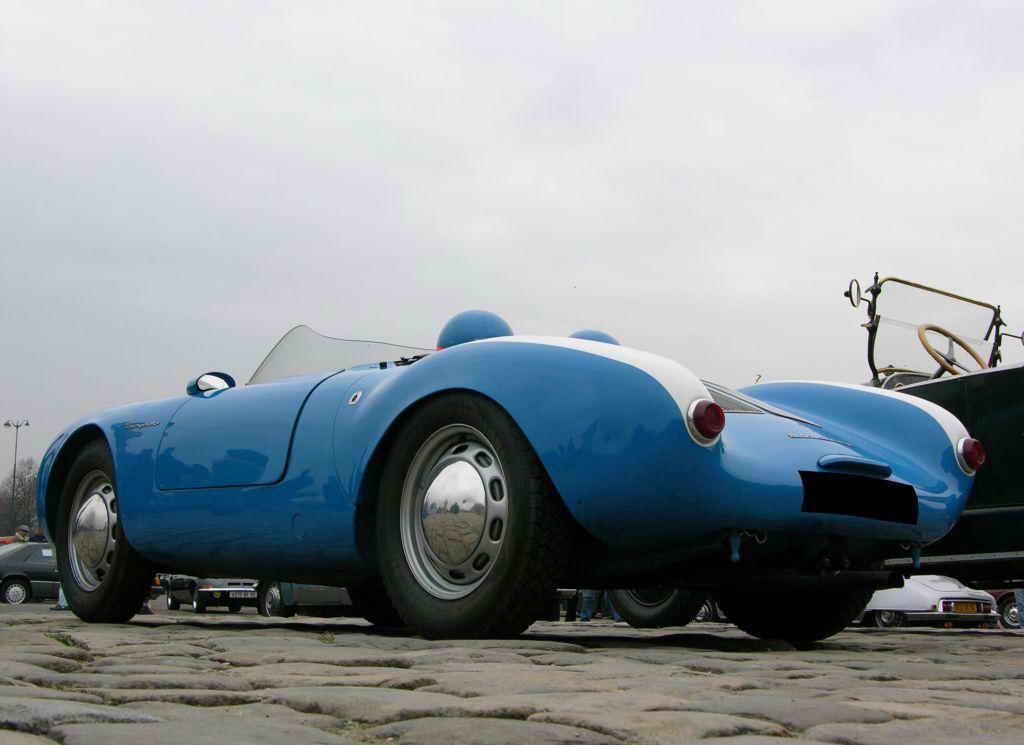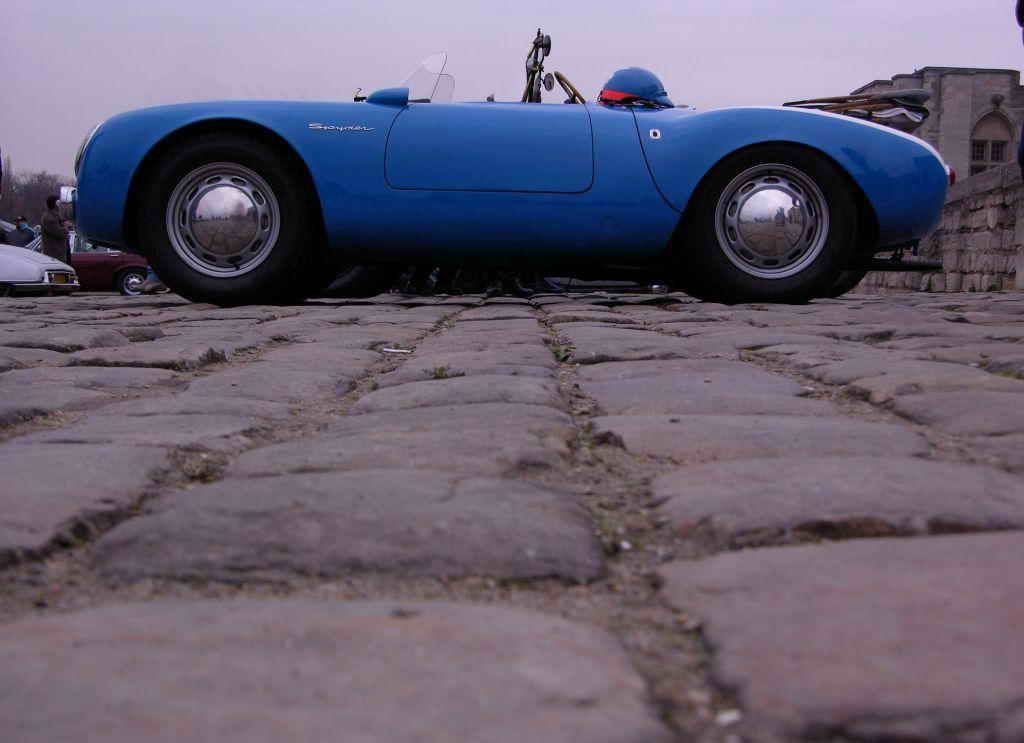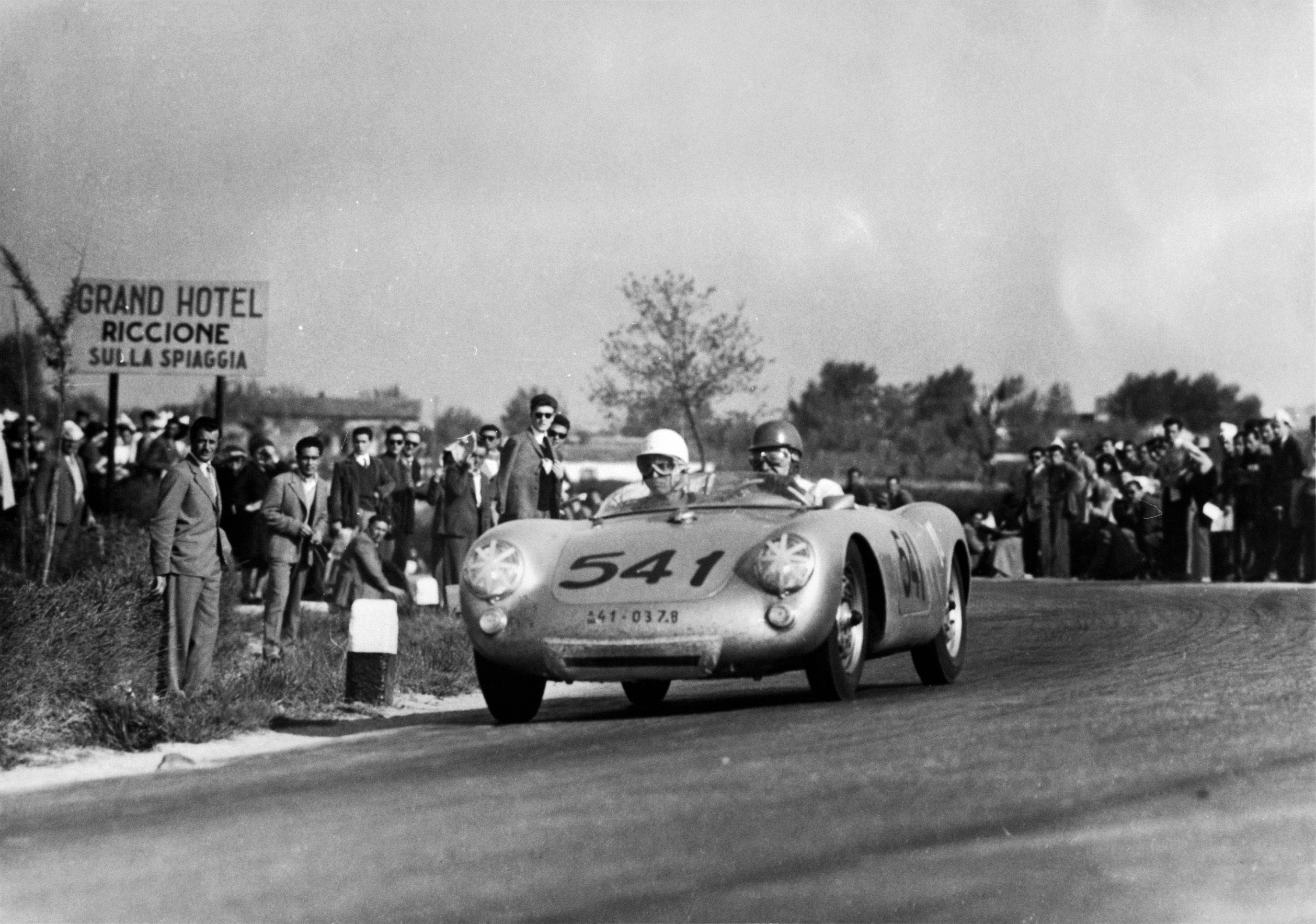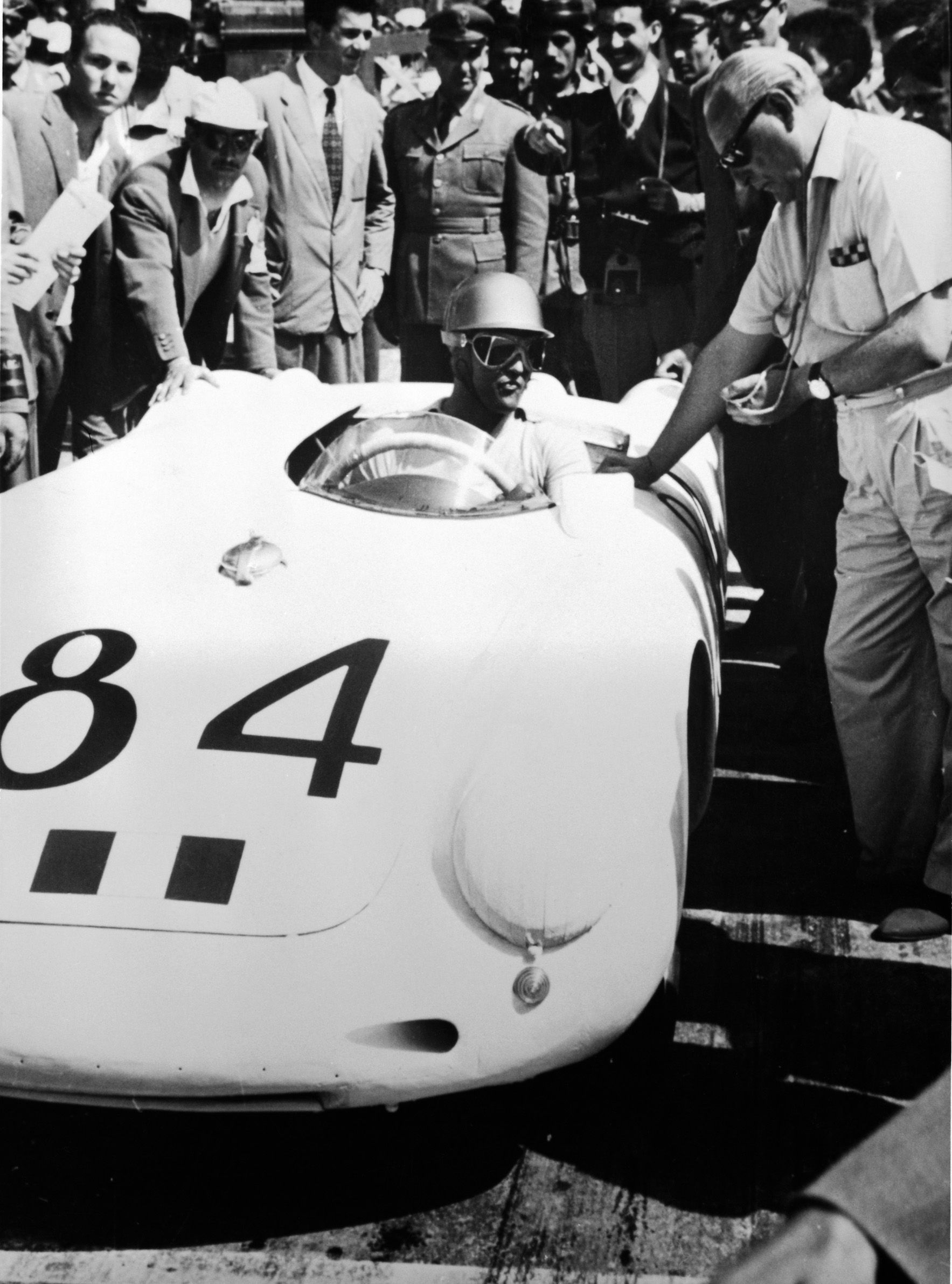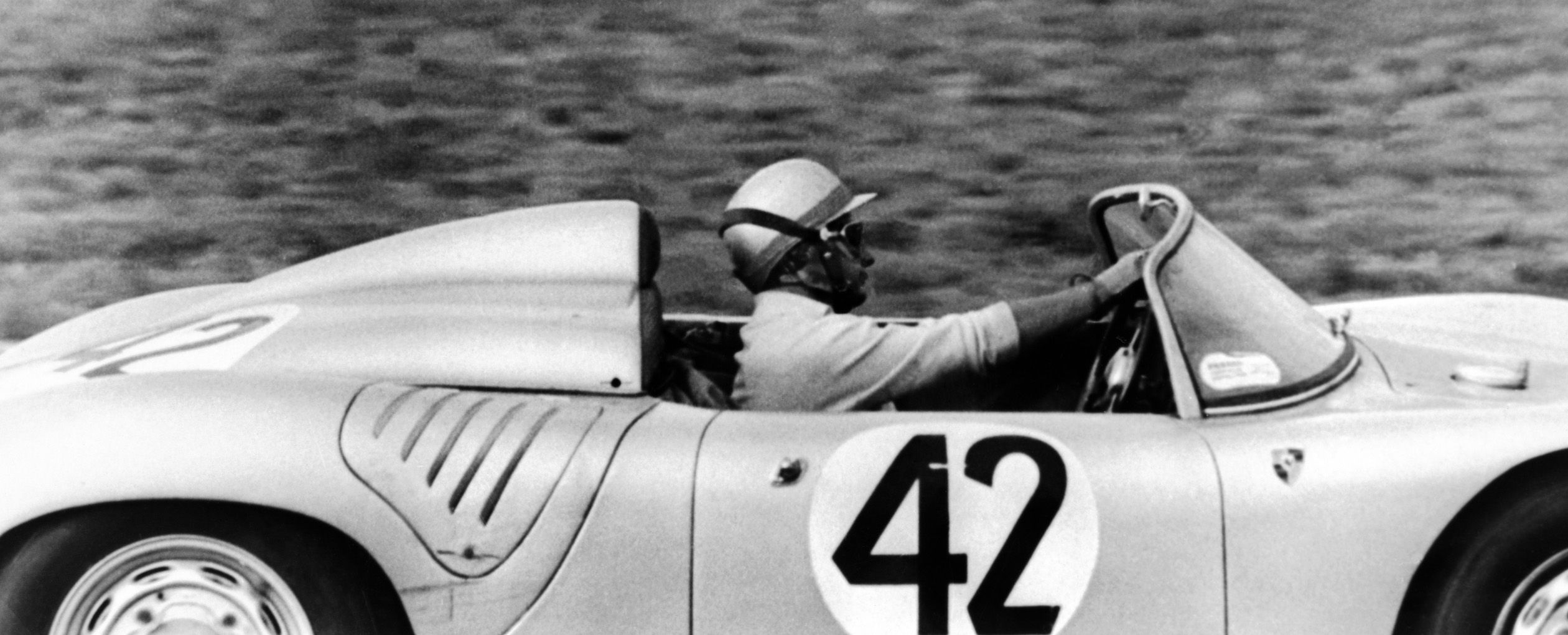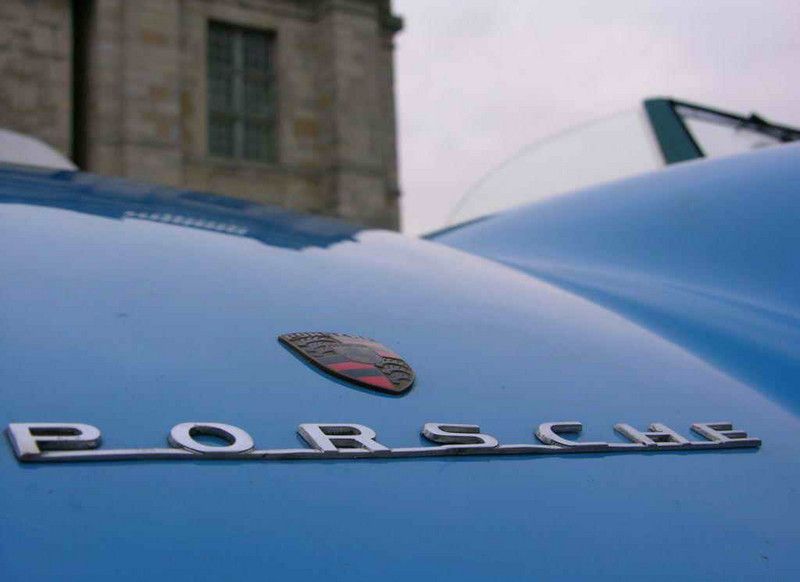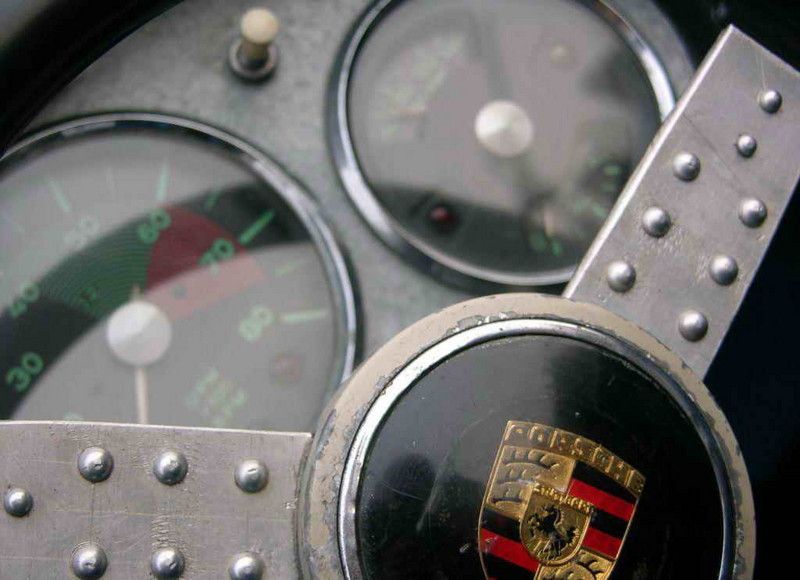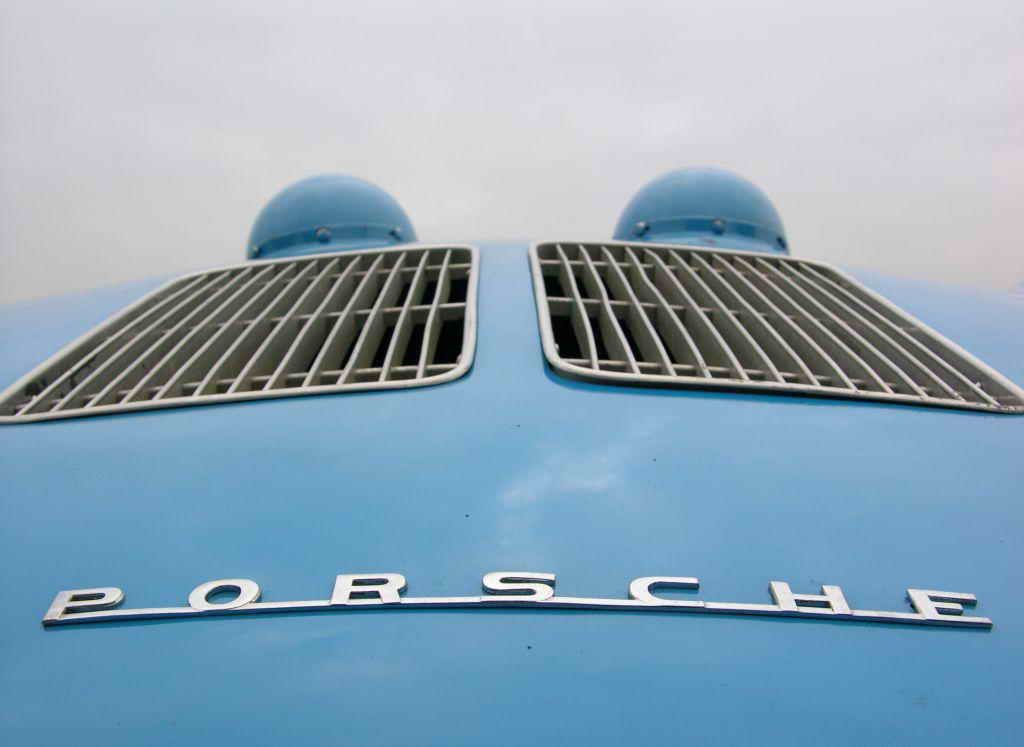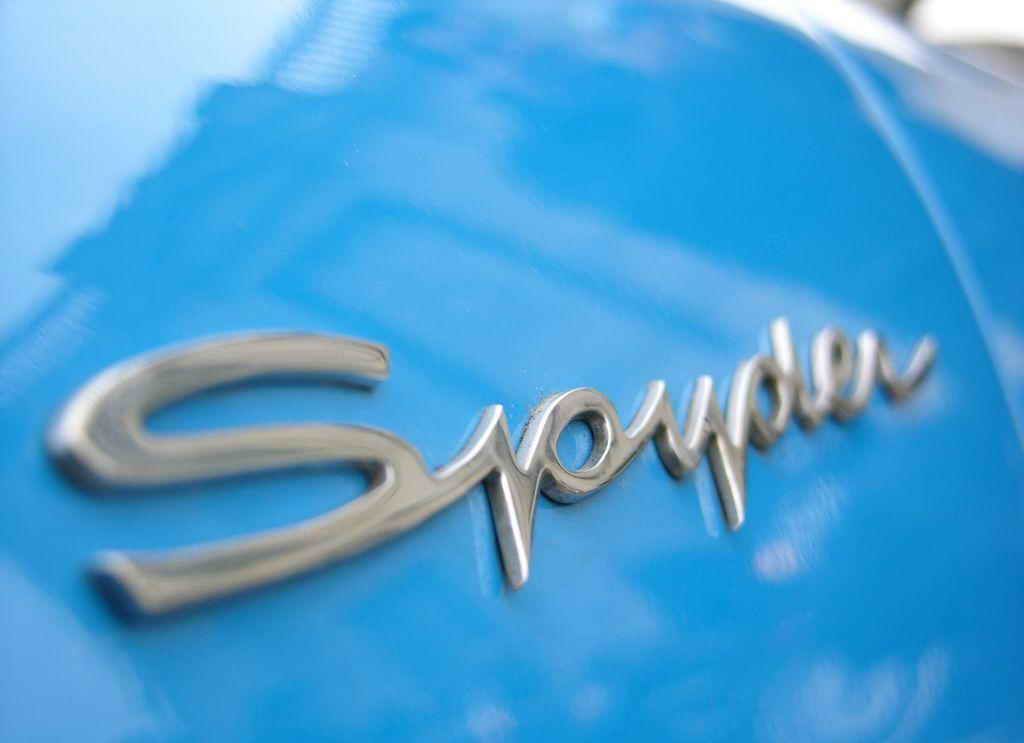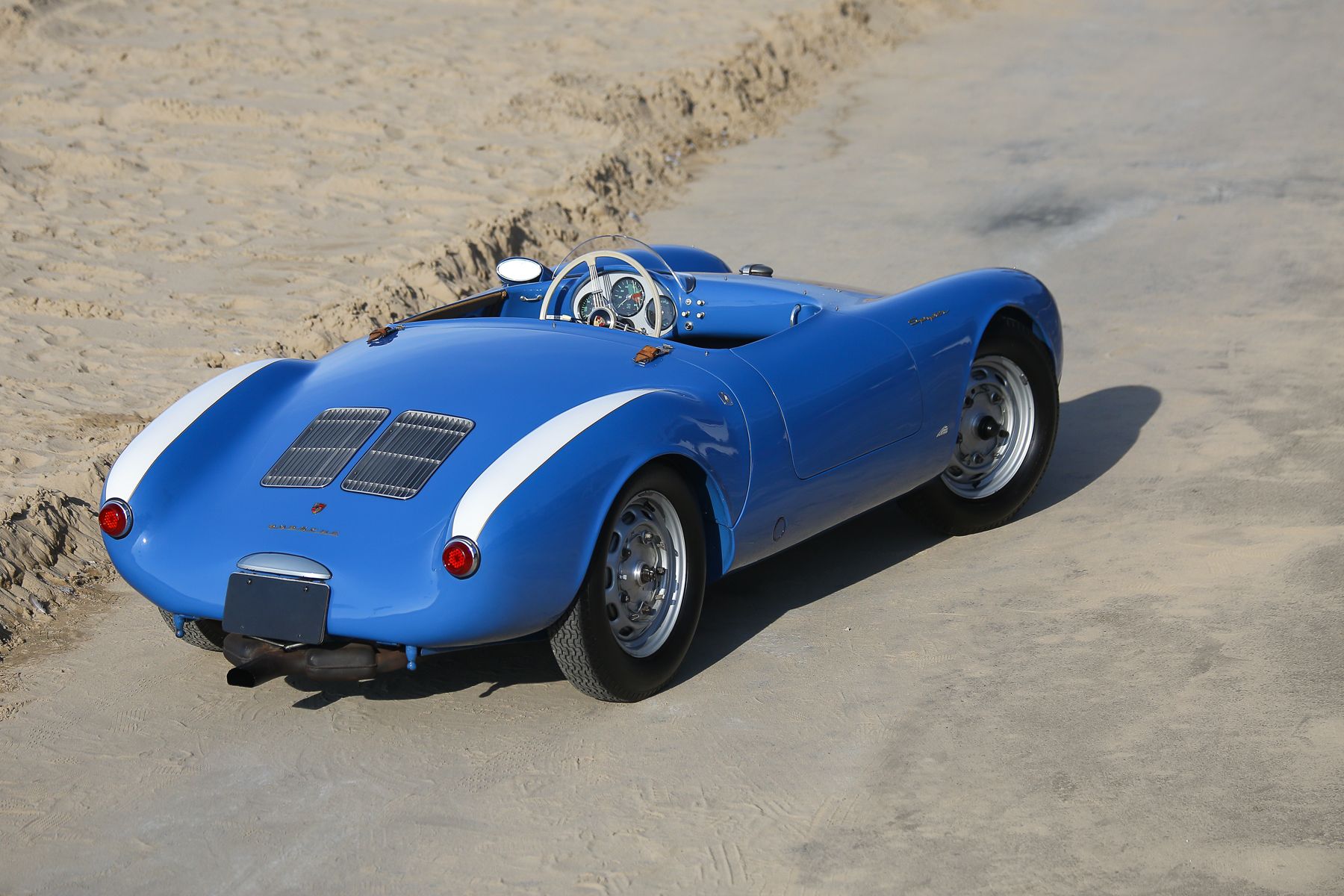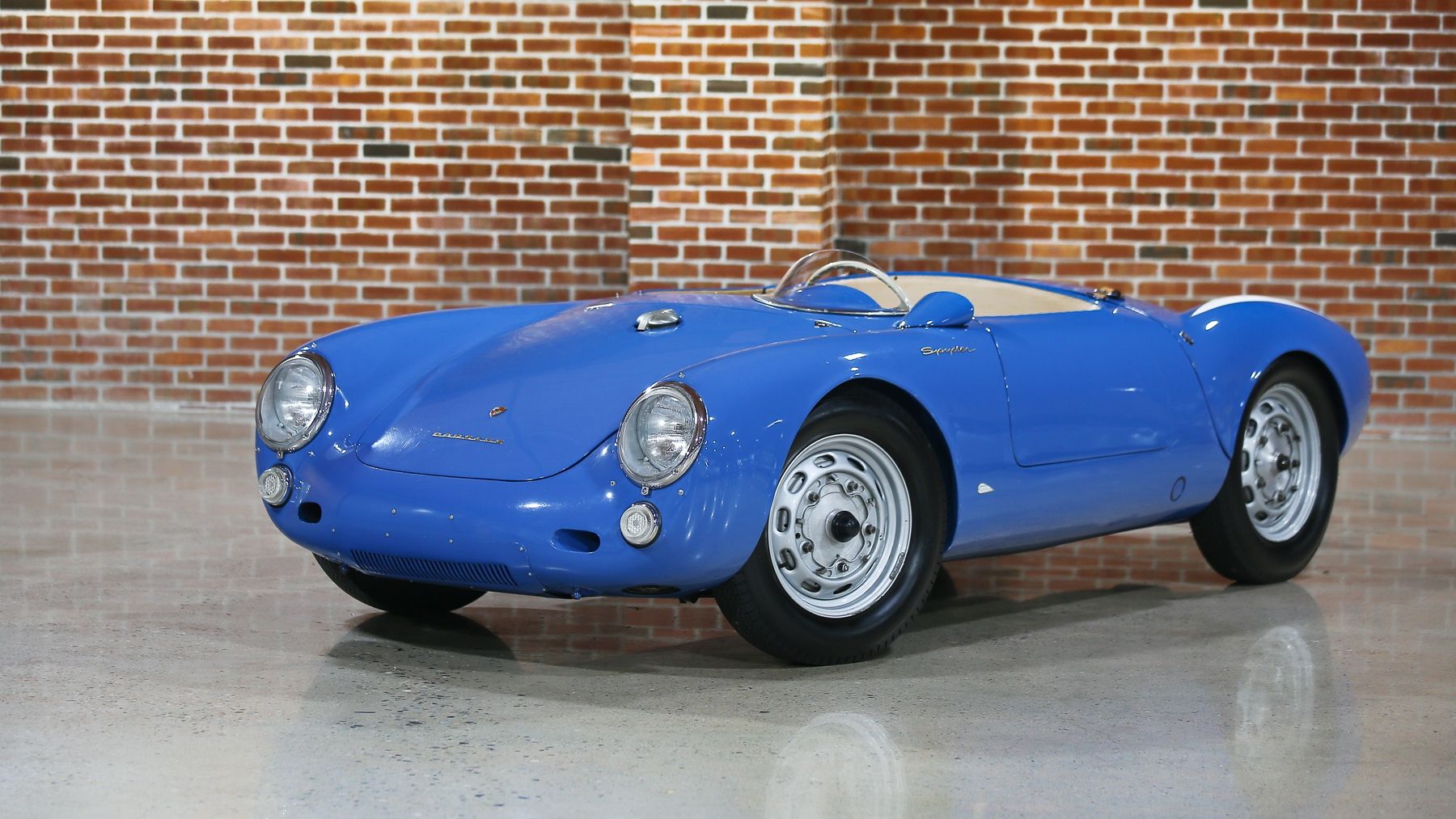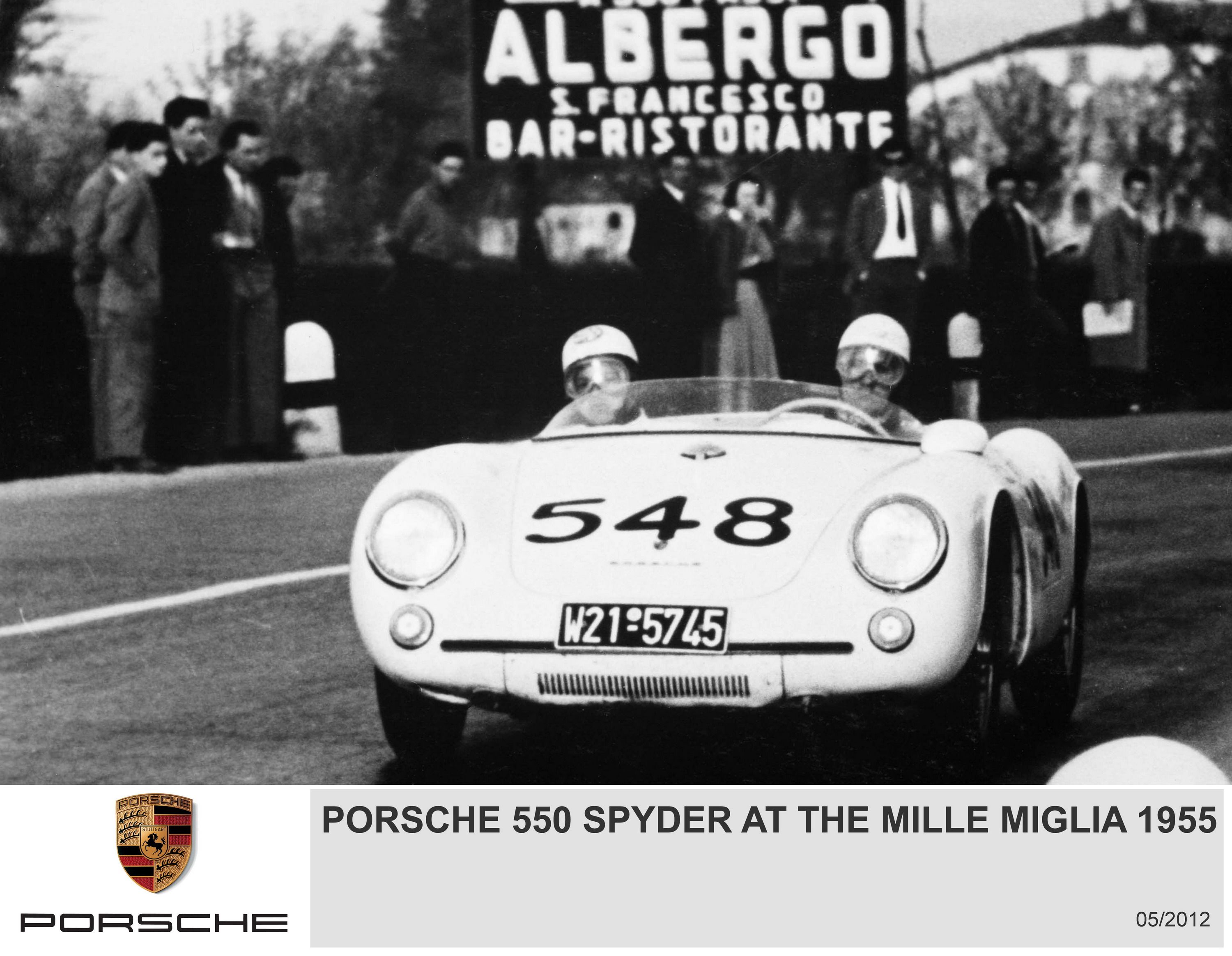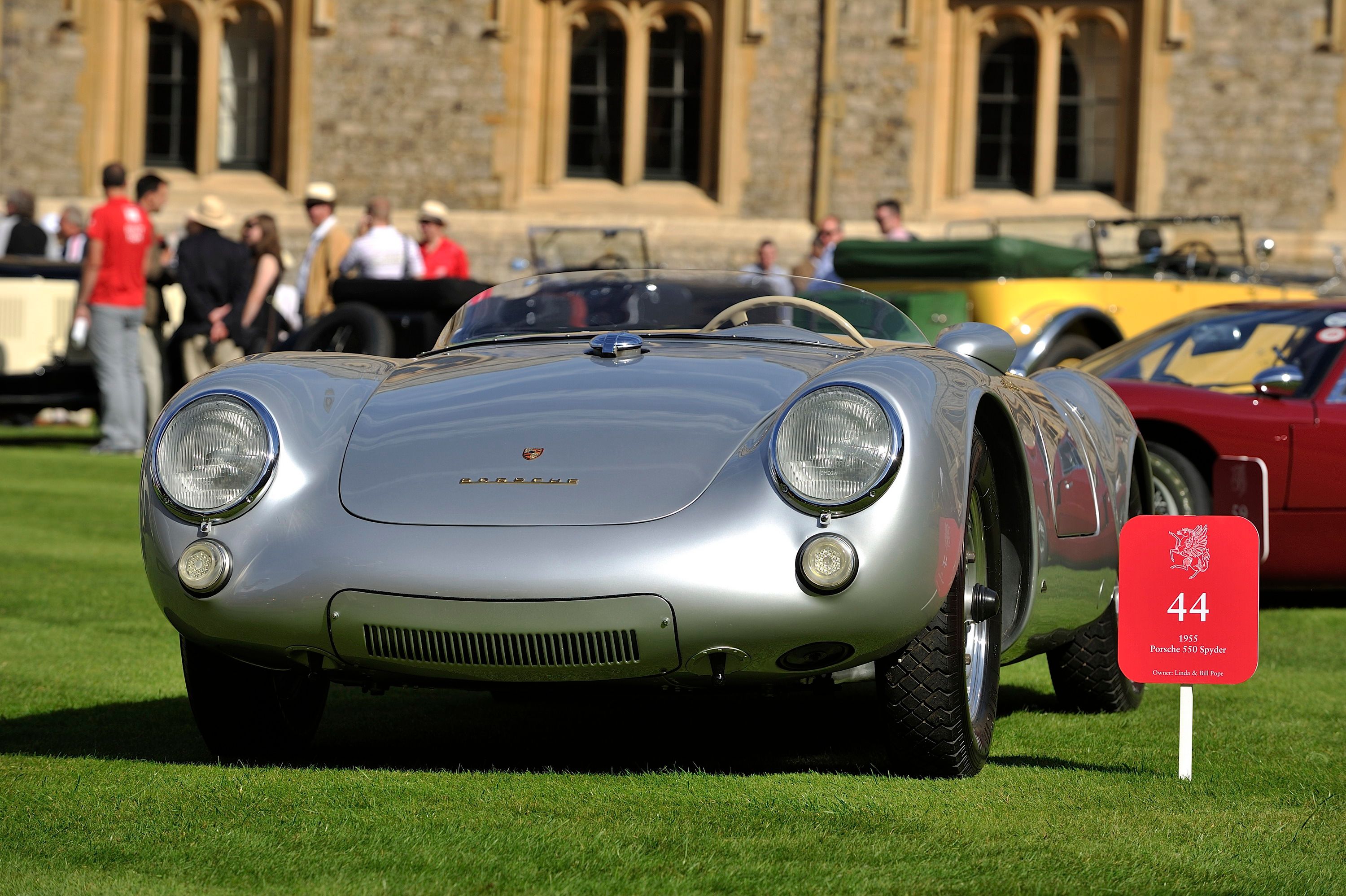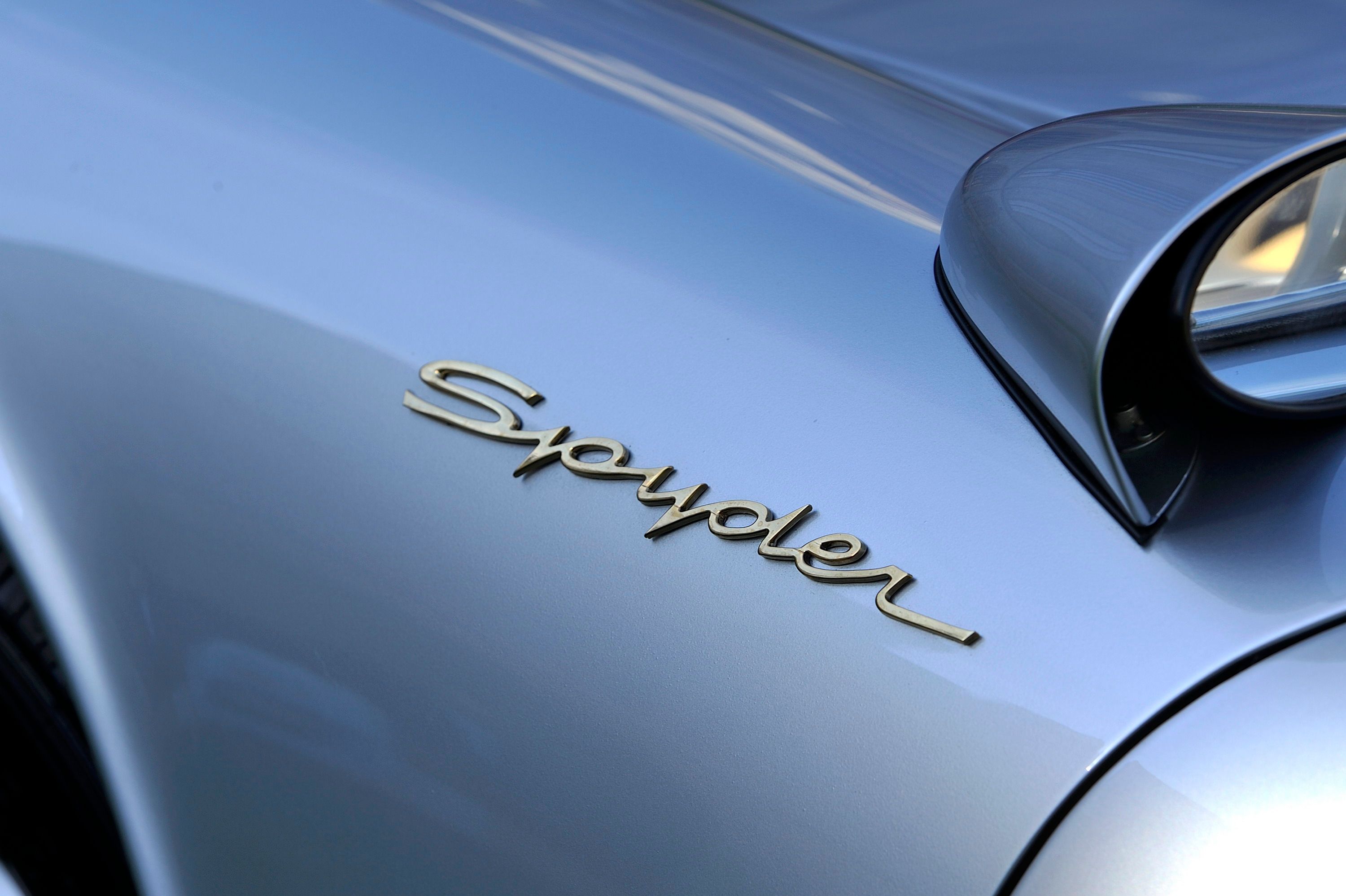The Porsche 550 Spyder is about as classic->ke503 and iconic as it gets, even for the storied Porsche->ke1 brand. The lightweight roadster came from inspiration of the Porsche 356,->ke666 but minus the hard roof. Porsche needed a race car->ke148 to compete in the roadster->ke1418 class, and that’s just what the 550 Spyder did. In fact, the third 550 prototype and first 550 to race won its first event at the famed Nürburgring Eifel Race in 1953. Following that victory, the 550 went on to claim 95 victories and 75 class wins over a total of 370 races.
Winning wasn’t the only thing the 550 Spyder was known for. It was his newfound love of racing that spurred actor James Dean to purchase an example. Sadly, the actor and his still-new 550 were both fatally injured when a car pulled out in front of Dean as he drove down a California highway.
Nevertheless, the 550 Spyder enjoyed a storied career, with 90 examples being built. Of those 90 cars, 43 of them were built as non-race, “customer cars.” Both Dean’s and the blue example seen here are within that allotment. If fact, the chassis numbers are only separated by five digits, with Dean’s car wearing plate number 550-055 while the other wears plate number 550-060. The latter was owned by avid Porsche collector Jerry Seinfeld until March 2016.
Updated 03/14/2016: Jerry Seinfeld managed to get an amazing $5.35 million at a Gooding & Company auction for his 1955 Porsche 550 Spyder.
Note: Images copyright and courtesy of Gooding & Company
Continue reading to learn more about the Porsche 550 Spyder.
1955 - 1956 Porsche 550 Spyder
- Make: Array
- Model: 1955 - 1956 Porsche 550 Spyder
- Engine/Motor: flat-4
- Horsepower: 110 @ 6200
- Torque: 89 @ 5000
- Transmission: four-speed manual
The History of 550-060
This example of Porsche history started life as a 1955 model, having been completed in August of that year. Its blue color came from the factory, including the white rear stripes and beige interior. The car’s first major owner was car collector Lou Hilton of Greenville, Maine. He held the car for roughly four decades, keeping the car in pristine condition. Hilton sold the car in 1999 to a Porsche collected Joel Horvitz of Massachusetts, who kept the car until his death in 2006. Since then Seinfeld has been the proud owner.
The car is in its original condition, including its chassis, body, engine, and transaxle. The only major repair on the books is a paintjob in the 1970s to restore its blue luster. The car currently has a mere 10,300 miles on the odometer.
Exterior
The Porsche 550 Spyder is a beautiful car from every angle. Its low-slung stance fools the eye to think it’s wider and longer than it is. The small two-seater is instantly recognizable as a Porsche thanks to the sloping hood and raised headlights. The rear has nearly mirrored-like design, with the decklid dramatically falling toward the license plate while the fenders rise up over the wheels and terminate at the small taillights.
Intricate details further the exterior’s beauty. Smooth lines are sparsely interrupted by body gaps, and with the passenger-side tonneau cover in place, the car looks as aerodynamic as a well-used bar of soap.
Details like the fuel filler door, the metal grates over the mid-mounted engine, the leather straps that hold the rear clamshell in place, and the skinny wheels and tires make the 550 uniquely antique.
Interior
The interior is just as spartan yet detail-rich as the outside. Two seats so close they touch ride just forward of the rear tires. Stretching your feet results in nearly touching the front axle. Cramped quarters, these are certainly. The bright blue body color drips into the interior over the metal dashboard, while the seats retain a beige hue. The four-speed manual shifter rises from the floor just ahead of the seats, while ahead of that, a bulkhead encircles the bottom of the dash, floor, and walls of the interior.
Controls were equally minimal. Four knobs and the ignition key slot ride just right of the large, three-spoke, wire steering wheel. The gauge cluster features a bright background while the green-on-black gauges have white needles. A simple speedometer, tachometer, fuel, and temperature gauge are all that’s present. A petty little windscreen helps divert air over the driver, though it likely doesn’t help much. You’d definitely want to leave this car at home during a rainstorm.
Drivetrain
The Porsche 550 Spyder came powered by a 110-horsepower, 1.5-liter flat-four cylinder with dual overhead camshafts and a dry sump oiling system. The all-aluminum engine came mated to a synchronized four-speed manual transaxle that sent power to the rear wheels through a ZF locking type differential.
The car, in its stock form, was capable of approximately 140 mph and could hit 60 mph in roughly seven seconds. That’s more than fast for sports cars back in the 1950s. The Porsche rides on a tube-frame chassis, hand-built buy the guys in Stuttgart. That, combined with the lightweight aluminum body, gave the car a curb weight of roughly 1,400 pounds.
Prices
When new, the Porsche 550 Spyder cost an amazing sum of $6,800 – big money back in the 1950s. Today, imaginably so, the money is bigger. A 550 Spyder sold in 2012 for $3.685 million. Expected to sell for between $5 and $6 million, Jerry Seinfeld's 550-060 changed owners for $5.35 million at a Gooding & Company auction in March 2016.
Competition
1955 Mercedes-Benz 300 SLR
Like the Porsche 550 Spyder, the Mercedes 300 SLR has a storied racing history. It’s also one of the most beautiful open-top roadsters of its day, featuring a low-slung body, two seating positions with an optional tonneau cover for the passenger side, a small windshield, and an appetite for winning.
The 300 SLR was far more powerful than the Porsche 550 Spyder, thanks to a 3.0-liter inline six-cylinder engine making roughly 290 horsepower and 235 pound-feet of torque, enabling it to reach a top speed of 180 mph.
Conclusion
This beautiful Porsche 550 Spyder is a pristine example of Porsche’s exciting history and design heritage. Its shapes and engineering details can still be found in modern Porsches like the 911 and Boxster. The 550’s limited production, ties to race-winning and James Dean and Jerry Seinfeld, and this particular example’s immaculate condition will always culminate into a rather high winning bid. For this example, it stands at $5.35 million, but similar 550 Spyders are expect to fetch even more as they age.


